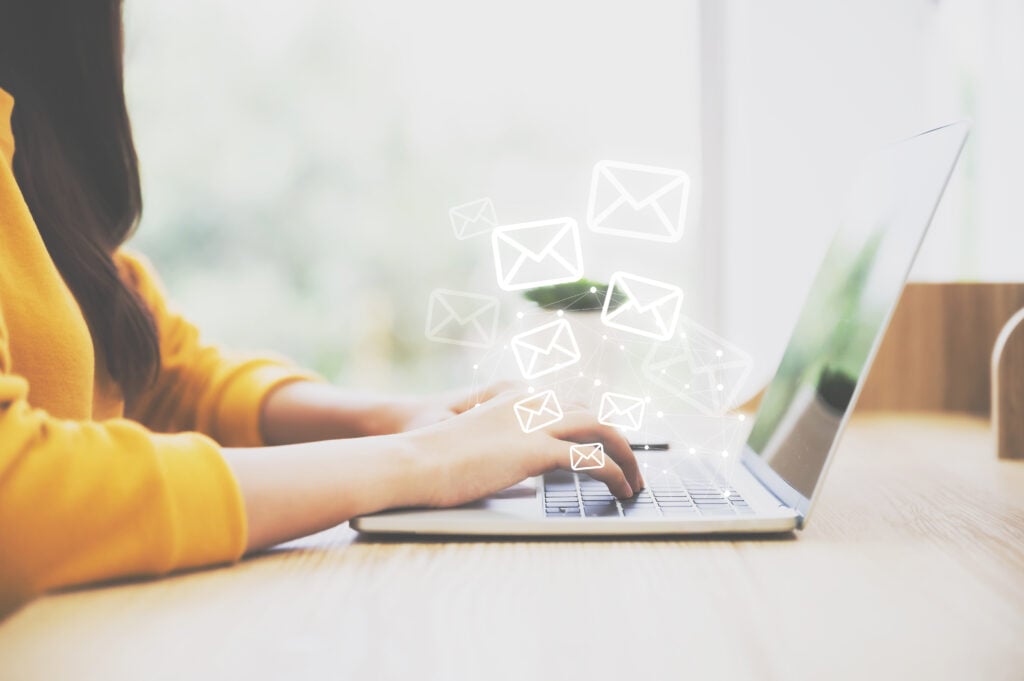In an ideal world, you would easily enjoy the peace of mind that comes from knowing any information you send via email would remain safe and secure. Unfortunately, sending sensitive information in an email can involve certain risks.
Examples of “sensitive information” you might send over email include:
- Social security numbers, passport numbers, and other such personal identification information.
- Credit card numbers, bank account numbers, and related financial information.
- Business secrets.
- Protected intellectual property.
- Confidential information pertaining to legal matters.
- Information about someone’s health.
- Login credentials.
The following are potential risks to account for when sending this type of sensitive information via email:
Hacking
Hackers may access email accounts. When someone hacks into an email account, they can gather virtually any information the owner of the account has sent or received.
Be aware that hacking attacks can vary in size and scale. While some hackers only target individual accounts, others may attempt to access entire email servers. This can result in major data breaches when they succeed.
Phishing
A phishing scam occurs when someone masquerading as a trustworthy sender (such as a bank, government agency, or even a work colleague) sends someone an email requesting that they provide valuable information. If you send sensitive information through email, and a phisher targets the recipient at some point in the future, they might accidentally leak that information.
Phishing is among the most prevalent cybersecurity risks affecting both individuals and organizations. According to Deloitte, approximately 91% of all cybersecurity attacks begin with phishing emails.
Guard against becoming the victim of a phishing attack by familiarizing yourself with the signs of phishing scams. If applicable, consider training all your employees and clients to properly identify phishing emails as well.
General Unauthorized Access and Human Error
A person doesn’t necessarily need to be an expert hacker to access an email account. Unauthorized access can occur if the owner of an account provides access to someone who may not be as trustworthy as they assume, such as a coworker or client. Additionally, if someone leaves their computer while they are still logged into their email, anyone who walks by could theoretically access the account and gather any sensitive information you may have sent to the owner.
That is just one example of the way human error can put sensitive information at risk. Human error can also involve accidentally sending an email to the wrong address, or forgetting to properly encrypt an email containing sensitive info. Guard against such mistakes by:
- Double-checking all addresses before sending an email.
- Encrypting any email that includes sensitive information.
- Never leaving your computer open and unattended.
If you own a company or manage a team, you should also frequently remind employees not to make such mistakes. Doing so is key to optimizing cybersecurity throughout the organization.
What You Need to Know About Guarding Against Risk When Sending Sensitive Information Over Email
Training and education can play a key role in preventing leaks when you or others send emails containing sensitive information. Additional steps you may take include:
- Using strong passwords.
- Using two-factor authentication.
- Reviewing old emails and deleting those containing sensitive information when you are confident you no longer need them.
Using the right tools to protect sensitive data and info is also essential. Sometimes, these tools can even allow you to share information through means other than email. For instance, at Closinglock, we offer:
- Secure document sending solutions.
- Safe payment processing.
- A secure portal for locking your company’s wire instructions.
- Payoff verification tools.
- Secure document eSigning tools.
Our goal is to ensure your data is safe, preventing leaks and breaches to optimize customer trust. Learn more about what Closinglock can do for you by requesting a demo today.
